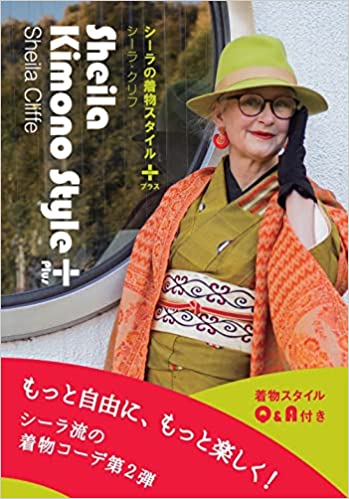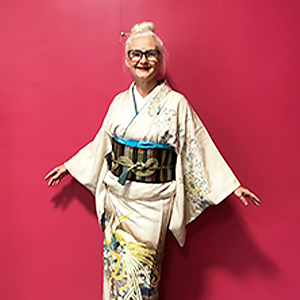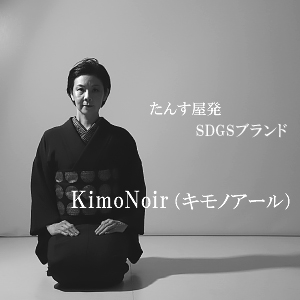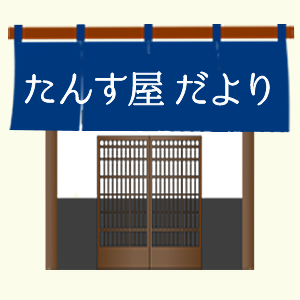2022年05月13日
シーラ・クリフの -元気・笑顔・着物-(第11回 江戸小紋)
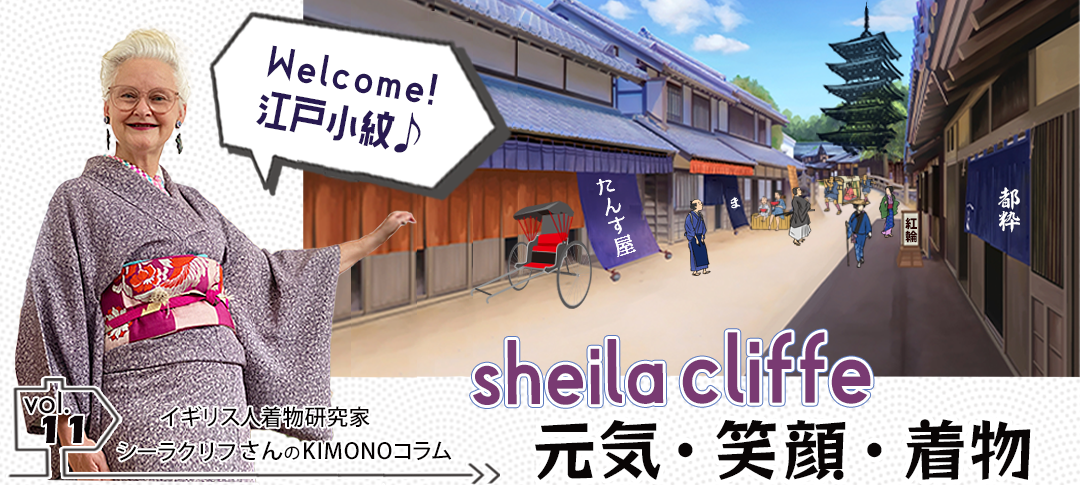
模様の細かさが江戸小紋の神髄
着物研究家のシーラ・クリフです。
江戸小紋は面白い着物です。小さな穴を開けた型紙で作られています。この作業は、熟練した型紙切り職人が、すべて手作業で行っています。この小さな穴が、鮫肌や雨だれ、小さな花や縞など、いろいろな模様にアレンジされているのです。
遠くから見ると無地に見えますが、近づいてみると、単色の着物に細かい点の模様が施されているのがわかるのです。もちろん、日本の工芸品の多くがそうであるように、職人は自分の技術を誇示するために、柄をどんどん細かくしていくのが好きだったのでしょう。柄が細かければ細かいほど、職人の技量が高く、値段も高くなるのです。
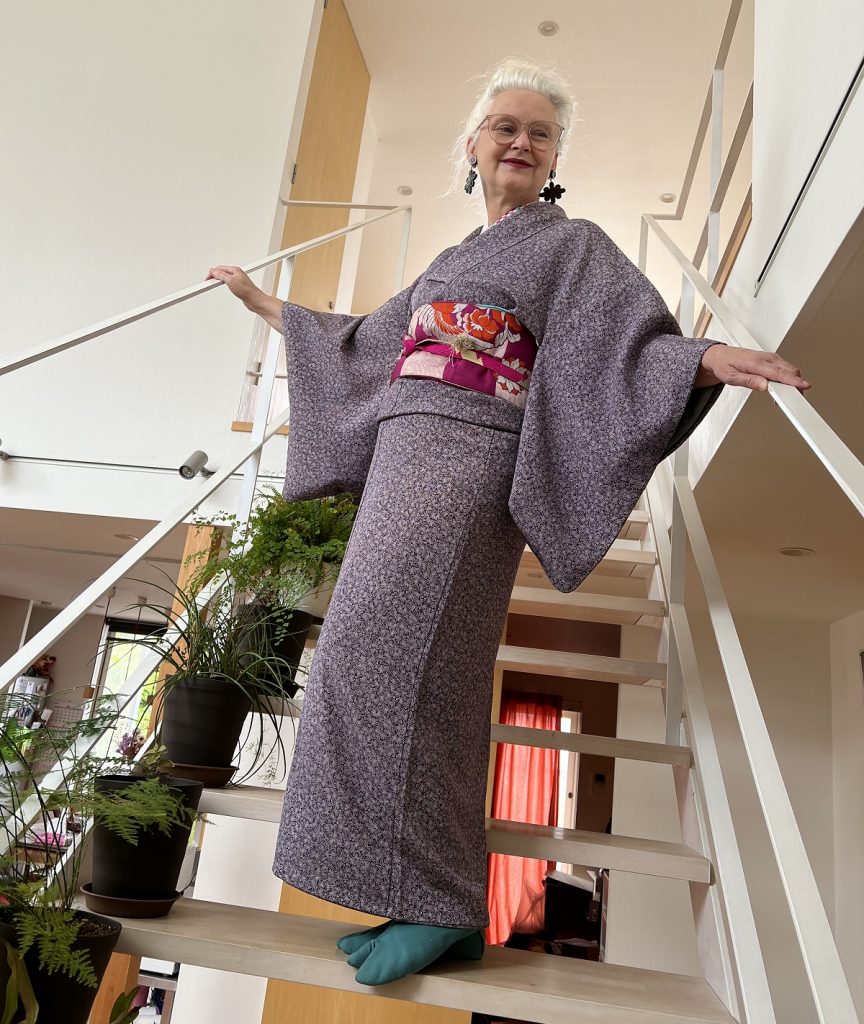

遊び心と熟練の技の結晶
でも、私の好みは、あまり細かいものではなくて、もう少しはっきりしていて、柄が見えるものが好きなのです。染め職人は、小さな型紙を何度も布の上に重ねて、型紙と型紙のつなぎ目がわからないようにするのもとても熟練を要します。1枚の着物で12メートルも型紙を貼らなければなりません。その上に単色を刷毛で塗っていくのです。
もともと江戸時代、江戸小紋の柄は武士の裃(かみしも)に使われていたものです。男性用で、武士階級のものでした。しかし、庶民がこの柄を気に入り、新しい遊び心を持った柄をたくさん考案したため、身分不相応な身なりを慎むことが重要だった時代に、江戸小紋は大流行したのです。

連面と続く江戸小紋のDNA
江戸小紋は、白が混じっているため、遠目にはややくすんだ色に見えるかもしれません。しかし、遠くから見るのと近くから見るのとでは、見え方が違うのも魅力のひとつです。それは、江戸小紋や手織りの繊細な絣(かすり)の着物ならではかもしれません。
江戸小紋は現在でも人気があり、新宿の落合や中井のあたりで染められています。新宿は江戸の染色業の中心地であり、今でも多くの工房があります。江戸小紋の柄は、着物だけでなく文房具やインテリア雑貨などにも見ることができます。控えめながらも魅力的な柄として残り、時代や季節を越えて、誰もが楽しむことができる着物です。
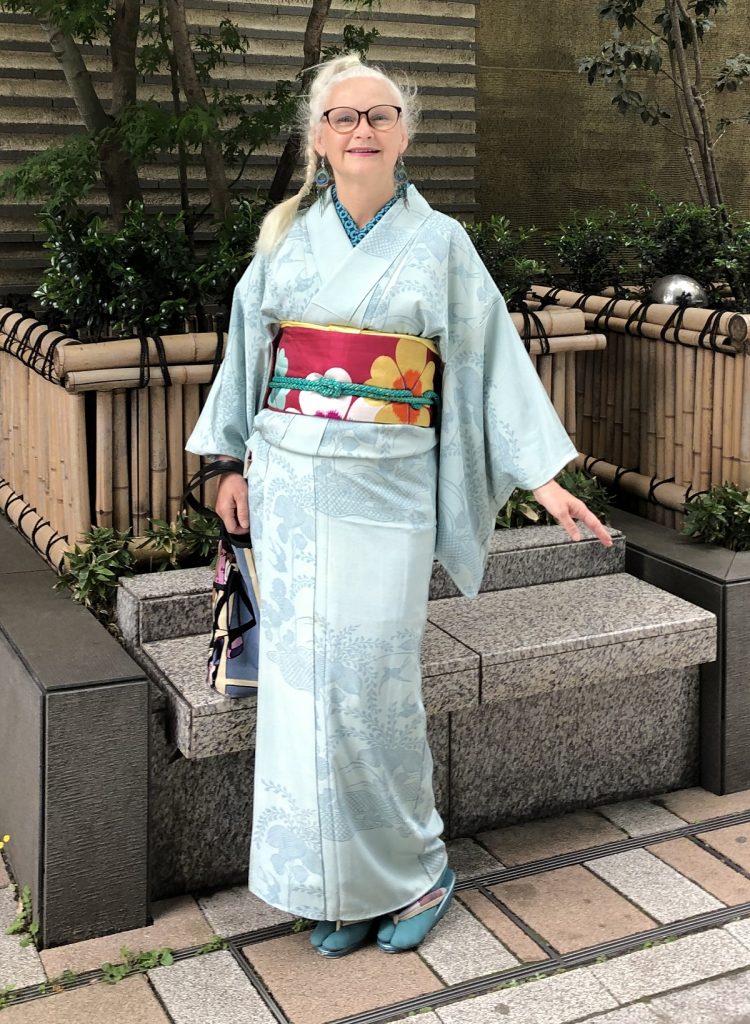
English
Tansu-Ya Blog 9. March 2022
Edo komon are interesting kimono. They are made with stencils that have tiny holes punched in them. This work is all done by hand, by skilled stencil cutters. These tiny holes are arranged into many kinds of patterns, such as shark skin, rain drops, tiny flowers or stripes. From a distance they look plain, but when you get close you can see the pattern of fine dots on the single coloured kimono. Of course, as with many Japanese crafts the artisans liked to make the pattern finer and finer to show off their skills. The finer the pattern, the more skilled the worker and the higher the price. However, my favourites are not the very fine ones, I prefer a little more definition, so I can see the pattern. The dyers also had to be very skilled to lay the small stencil repeatedly on the cloth so that no one could see where the join was, between each stencil pattern. They have to repeat the stencil pasting for 12 meters for one kimono. After the pasting the single colour is brushed on top.
Originally, in the Edo period, Edo komon patterns were used on samurai’s kami shimo. They were for men, and for the military class. But ordinary people loved the patterns and invented many new and playful ones, so Edo komon became very popular, at a time when it was important not to dress above your rank.
From a distance the Edo komon can look rather dull because the colour is mixed with white. But one of their attractions is the difference in looking from far away, and looking from close up. It is perhaps unique to Edo komon and some finely made hand-woven kasuri kimono. Edo komon is still popular today and it is woven in the Ochiai and Nakai areas of Shinjuku. Shinjuku was the center of Edo’s dyeing industry and there are still many workshops there. Edo komon patterns are not only seen on kimono, but can also be seen on stationary and on interior goods. The patterns remain as an understated, but attractive design that crosses the ages, the seasons and can be enjoyed by everyone.

シーラ・クリフさんProfile
イギリス出身の着物研究家・着付師・着付け講師。1985年に来日し、着物文化の伝道師として活躍。ビジュアル書籍『Sheila Kimono Style Plus』(かもめの本棚) の出版や、テレビ・CMの出演により人気上昇中の文化人。たんす屋の催事イベント内のトークショーにもたびたび出演していただいており、毎回好評を博している。
SNS:公式twitter 公式Instagram



